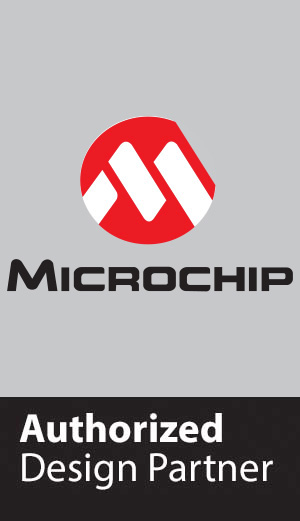Acqua technical documentation Buy
Compiling Linux Kernel 5.4.x LTS for Acqua
Prerequisite
A Linux PC in required to cross compile the Kernel image.
This procedure has been tested on:
- Ubuntu 18.04.4 LTS (amd64)
- Debian Buster 10 (amd64)
Follow this article to install the Toolchain requested to compile the sources:
Moving from the Kernel 4.19 to 5.4 it is requested to compile the at91bootstrap bootloader following this guide:
- https://www.acmesystems.it/at91bootstrap
The previous version of at91bootstrap 3.9.1 will not work correctly
It is advisable to have a Debug Port Interface like DPI or USB-3V-SER to check the error messages during the Kernel bootstrap
Step-by-step procedure
Open a terminal on your Linux PC and download the Linux Kernel sources from the main stream repository:
wget https://cdn.kernel.org/pub/linux/kernel/v5.x/linux-5.4.163.tar.xz
extract the Kernel sources from the compressed file by typing:
tar xvfJ linux-5.4.163.tar.xz
move inside the folder created:
cd linux-5.4.163
copy the basic kernel defconfig file suggested from us
wget https://www.acmesystems.it/www/acqua_compile_kernel_5_4/acme-acqua_defconfig -O arch/arm/configs/acme-acqua_defconfig
Set the defconfig:
make ARCH=arm CROSS_COMPILE=arm-linux-gnueabi- acme-acqua_defconfig
Customize the default Linux Kernel configuration:
If you need to customize the Kernel configuration or you just want to take a look around the Kernel setup type:
make ARCH=arm menuconfig
and navigate inside the Kernel configuration using the arrow keys and following the help provided by the menuconfig interface.
Note to use the 7 inch display on the legacy BERTA-A5 display boards
If you are using a TFT with your Acme board change the file
drivers/gpu/drm/panel/panel-simple.c
using these commands:
rm drivers/gpu/drm/panel/panel-simple.c
wget https://www.acmesystems.it/www/acqua_compile_kernel_5_4/panel-simple.c -O drivers/gpu/drm/panel/panel-simple.c
Generate the Device Tree Blob file (.dtb)
Download the Acqua device tree file:
wget https://www.acmesystems.it/www/acqua_compile_kernel_5_4/at91-sama5d3_acqua.dts -O arch/arm/boot/dts/at91-sama5d3_acqua.dts
Now compile the device tree file:
make ARCH=arm CROSS_COMPILE=arm-linux-gnueabi- at91-sama5d3_acqua.dtb
Compile the Kernel image
Compile the Linux Kernel sources and generate the binary compressed image file to save in the first partition of microSD card.
make -j8 ARCH=arm CROSS_COMPILE=arm-linux-gnueabi- zImage
...
Image arch/arm/boot/zImage is ready
Compile the Kernel modules
The image generated contains the Linux Kernel and all the built-in device drivers (option [*] in menuconfig) compiled with it.
Al the drivers compiled as external modules (option [M] in menuconfig)
need to be compiled and saved in the rootfs /lib directory on the second
partition of the microSD. We didn't use any [M] flag in our defconfig so this procedure
is not requested but. in case you add something. these are the commands to use
to compile them:
make modules -j8 ARCH=arm CROSS_COMPILE=arm-linux-gnueabi-
make modules_install INSTALL_MOD_PATH=./modules ARCH=arm
Copy the boot files into the first microSD partition
Insert a formatted microSD with the boot loader (at91bootstrap) and the rootfs contents already created in your Linux PC and copy on it these files:
Write the Linux Kernel image and the device tree blob in the first microSD partition:
sudo cp arch/arm/boot/zImage /media/$USER/boot
sudo cp arch/arm/boot/dts/at91-sama5d3_acqua.dtb /media/$USER/boot/at91-sama5d3_acqua.dtb
Write the Linux Kernel modules inside the second microSD partition:
sudo rsync -avc modules/lib/. /media/$USER/rootfs/lib/.
After the first boot
At the first access to the board command line update the module dependencies by typing this command:
depmod -a
Create a defconfig of your own Kernel configuration
make ARCH=arm savedefconfig
The file defconfig contains your configuration. You could rename and copy it in arch/arm/configs/
cp defconfig arch/arm/configs/my_defconfig
Links
- Kernel configuration (acme-acqua_defconfig)
- Device tree (at91-sama5d3_acqua.dts)
- Kernel source changed:

Systems designer, webmaster of www.acmesystems.it and founder of Acme Systems srl
Personal email: tanzilli@acmesystems.it
Web pages: https://www.acmesystems.it --- https://www.acmestudio.it
Github repositories: https://github.com/tanzilli --- https://github.com/acmesystems
Telegram group dedicated to the Acme Systems boards: https://t.me/acmesystemssrl





